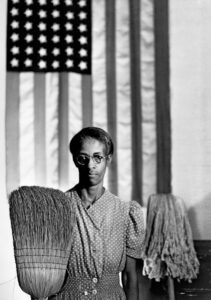In the past year, Gordon Parks was discussed frequently within my classes and I had done many projects based off of his work. Photography by itself has always had the power top open ones eyes and Parks knew that which is why he referred to his camera as a weapon but I know he faced issues while during his path. Not only did I decide to look into Gordon Parks and the ethical issues he faced while working I also wanted to look at the issues within photography.
Ethics is a system of moral principles, a difference between right and wrong and this helps guide people, in and out of the workplace. Ethics in the workplace follows the lines of obeying your company’s rules, successful communication, taking responsibility, professionalism as well as trust and mutual respect for your colleagues at work. Gordon Parks used his camera to fight racism and poverty, both issues he was fairly familiar with, however he also faced discrimination in the workplace, an unethical but not uncommon practice in that time. Parks documented black america as a photojournalist for the Farm Security Administration (FSA), Life magazine and Vogue and challenged racial barriers within Life Magazine and other agencies. He recalled being turned away from photographing white americans because of the color of his skin but despite that, he was able to capture the civil rights movement for Life Magazine because of the color of his skin .
For photography, there is always the typical manipulation done by editors and photographers. Those changes entail of exposure, contrast, shadows, highlights etc; anything to make sure there is proper lighting with the photo. Some editors take the “manipulation” process too far by editing an image beyond recognition, often these images are of woman and these images create a false beauty standard that can be harmful to young girls. This in my opinion is an unethical practice that we shouldn’t blame compnanies like Adobe for, but rather the companies and creatives that believe and continue this practice.



